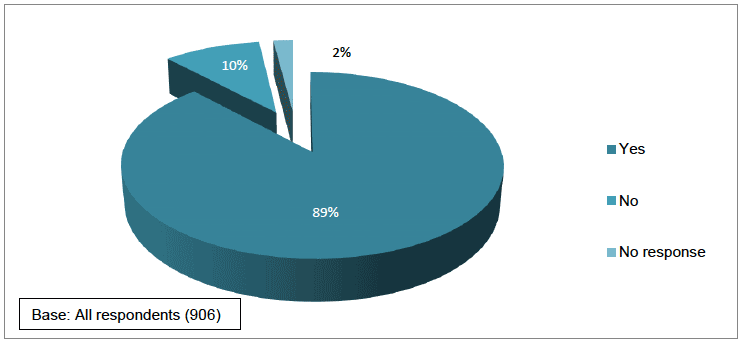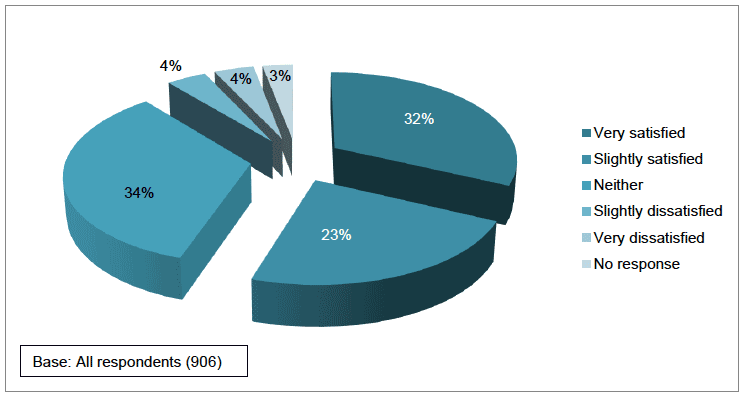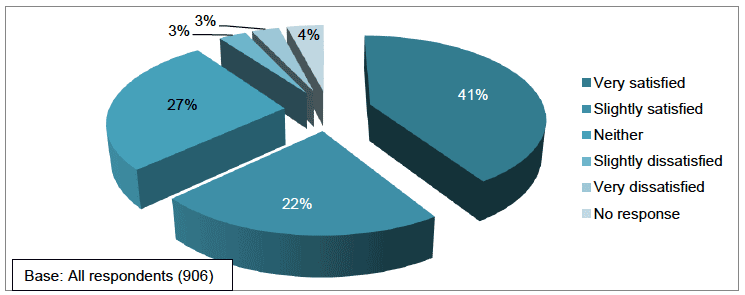Analysis of Responses to the Consultation on the Proposal to Permit Tail Docking of Working Spaniels and Hunt Point Retrievers
Analysis of responses to the consultation on tail-docking.
About the consultation
The final section of the consultation paper asked respondents a series of questions about the consultation.
Whether the consultation explained key issues sufficiently
Respondents were asked 'Do you consider that the consultation explained the key issues sufficiently to properly consider your responses?' As chart 4 demonstrates, views were very positive, with a large majority of respondents (89%) saying that the consultation explained the key issues sufficiently to properly consider their response. Only 10% of respondents felt this was not the case.
Chart 4: Whether the consultation explained key issues sufficiently to consider a response

Respondents were then asked 'Do you consider that you had sufficient time to respond to the consultation?'. Views on the timescale were very positive with almost all respondents (97%) agreeing the timescale was sufficient.
Chart 5: Whether there was sufficient time to respond to the consultation

The next question in the consultation paper asked respondents to provide any other comments on the way the consultation had been conducted; 190 respondents opted to provide commentary. The key comment emerging was that a decision on whether to introduce a tightly defined exemption needs to be taken (31%). Some other comments made by respondents reiterated those raised in earlier questions; such as the main issue is the welfare of working dogs (cited by 16%), or that the ban should be relaxed (12%).
Specific comments on the consultation process referred to concerns over the distribution of the consultation paper (14%), there being too great a focus on financial issues (14%) or that the focus should be on the opinions of those who work with dogs (10%). While 5% noted that some of the questions were poorly worded, ambiguous or misleading, the same proportion also noted the consultation paper was user-friendly and fair.
A small number of respondents commented that the consultation was biased, with 3% noting this was biased towards exemptions being approved (3%) or that the consultation was aimed at the field sports fraternity (1%)
The table below shows the comments made by 5% or more of respondents.
Table 16: Any other comments on whether Scottish Ministers should introduce a tightly defined exemption
| Total (%) |
Organisations (%) |
Individuals (%) |
|
|---|---|---|---|
| Decision needs to be made | 31 | 18 | 31 |
| Main issue is welfare of dogs | 16 | 9 | 17 |
| Concerns over distribution of consultation paper | 14 | - | 15 |
| Too much focus on financial issues | 14 | 9 | 14 |
| Ban should be relaxed | 12 | 18 | 11 |
| Focus should be on views of those who work with dogs | 10 | - | 11 |
| Some of consultation poorly worded / ambiguous / misleading | 5 | - | 6 |
| Positive comment on consultation eg user-friendly / fair | 5 | 9 | 5 |
** Figures do not add to 100% because respondents could give as many answers as they wished
Respondents were then asked to indicate how satisfied they were with the consultation. As shown in chart 6, the majority of respondents (55%) were satisfied with the consultation and a further 34% were neither satisfied nor dissatisfied. Only 8% were dissatisfied to any extent.
Chart 6: Satisfaction with the consultation

Respondents were then offered the opportunity to provide an explanation for their response to this question, and 153 did so. One in five (20%) noted that this consultation should have been carried out at an earlier point in time or that it has taken to long for this consultation to be conducted. Views were mixed on the questions posed, with 10% commenting that the questions were okay or that they addressed key issues, while 9% felt the questions were poorly worded or biased. Just under one in ten (8%) felt that there should have been a greater focus on animal welfare and less on commercial aspects related to tail docking and 6% felt there should have been greater or wider publicity for this consultation.
Finally, respondents were asked how they would rate their satisfaction with using Citizen Space to respond to this consultation. As shown in chart 7, a majority of respondents (63%) were satisfied to some extent with Citizen Space and a further 27% were neither satisfied nor dissatisfied. Only 6% were unsatisfied with the use of Citizen Space.
Chart 7: Satisfaction with Citizen Space

Again, respondents were offered an opportunity to provide comments on the use of Citizen Space and 70 did so. Almost one in three (30%) noted that Citizen Space is simple, clear or easy to use and a further 11% commented that it was fine or okay.
A small proportion of respondents (6%) noted they had a technical problem with some aspects of the submission and 4% commented that it was difficult to include attachments or references. A small proportion (3%) did not like the name Citizen Space and the same proportion made negative comments about the process being online rather than paper-based.
Contact
There is a problem
Thanks for your feedback